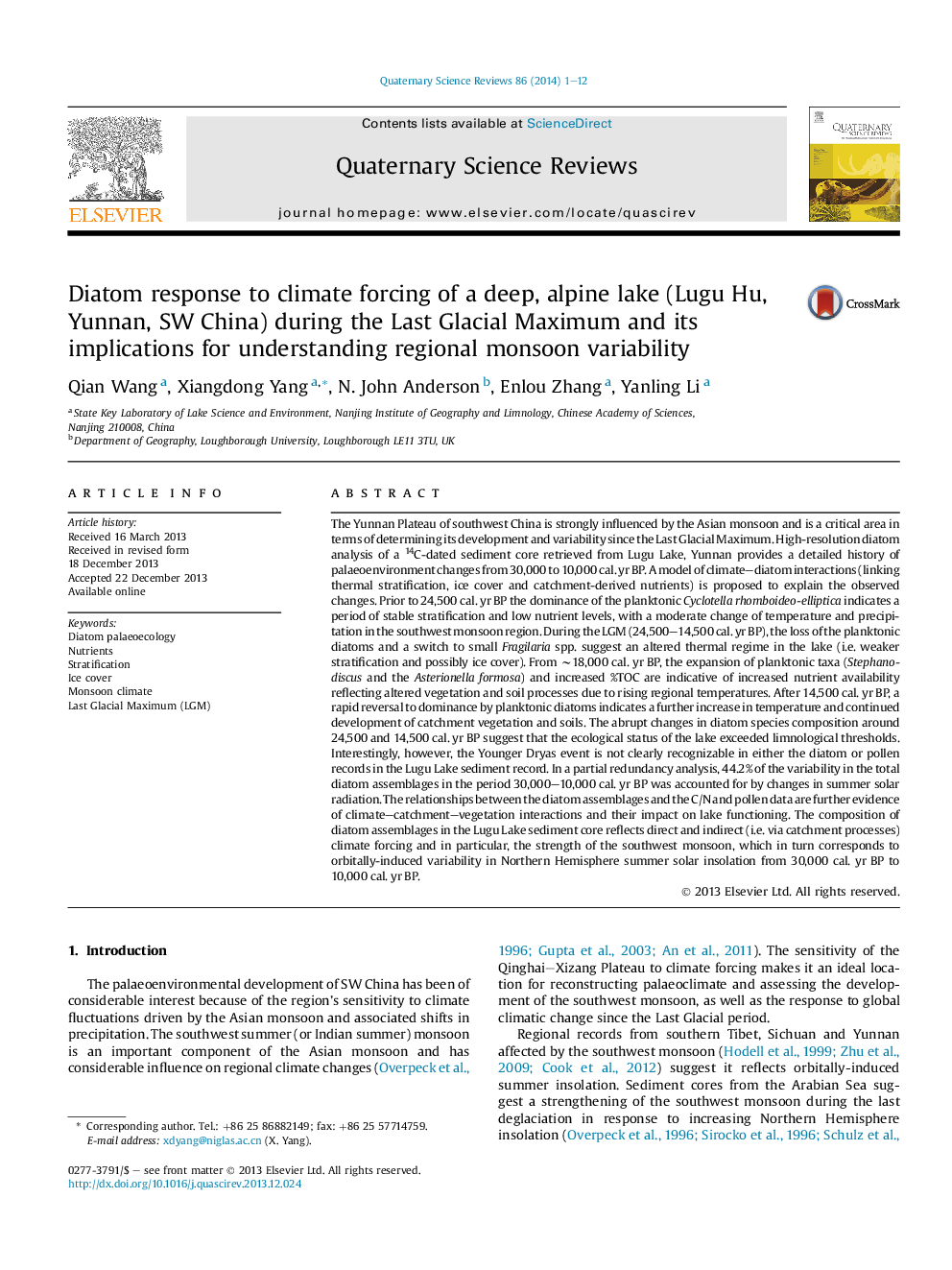| Article ID | Journal | Published Year | Pages | File Type |
|---|---|---|---|---|
| 6445709 | Quaternary Science Reviews | 2014 | 12 Pages |
Abstract
The Yunnan Plateau of southwest China is strongly influenced by the Asian monsoon and is a critical area in terms of determining its development and variability since the Last Glacial Maximum. High-resolution diatom analysis of a 14C-dated sediment core retrieved from Lugu Lake, Yunnan provides a detailed history of palaeoenvironment changes from 30,000 to 10,000 cal. yr BP. A model of climate-diatom interactions (linking thermal stratification, ice cover and catchment-derived nutrients) is proposed to explain the observed changes. Prior to 24,500 cal. yr BP the dominance of the planktonic Cyclotella rhomboideo-elliptica indicates a period of stable stratification and low nutrient levels, with a moderate change of temperature and precipitation in the southwest monsoon region. During the LGM (24,500-14,500 cal. yr BP), the loss of the planktonic diatoms and a switch to small Fragilaria spp. suggest an altered thermal regime in the lake (i.e. weaker stratification and possibly ice cover). From â¼18,000 cal. yr BP, the expansion of planktonic taxa (Stephanodiscus and the Asterionella formosa) and increased %TOC are indicative of increased nutrient availability reflecting altered vegetation and soil processes due to rising regional temperatures. After 14,500 cal. yr BP, a rapid reversal to dominance by planktonic diatoms indicates a further increase in temperature and continued development of catchment vegetation and soils. The abrupt changes in diatom species composition around 24,500 and 14,500 cal. yr BP suggest that the ecological status of the lake exceeded limnological thresholds. Interestingly, however, the Younger Dryas event is not clearly recognizable in either the diatom or pollen records in the Lugu Lake sediment record. In a partial redundancy analysis, 44.2% of the variability in the total diatom assemblages in the period 30,000-10,000 cal. yr BP was accounted for by changes in summer solar radiation. The relationships between the diatom assemblages and the C/N and pollen data are further evidence of climate-catchment-vegetation interactions and their impact on lake functioning. The composition of diatom assemblages in the Lugu Lake sediment core reflects direct and indirect (i.e. via catchment processes) climate forcing and in particular, the strength of the southwest monsoon, which in turn corresponds to orbitally-induced variability in Northern Hemisphere summer solar insolation from 30,000 cal. yr BP to 10,000 cal. yr BP.
Related Topics
Physical Sciences and Engineering
Earth and Planetary Sciences
Geology
Authors
Qian Wang, Xiangdong Yang, N. John Anderson, Enlou Zhang, Yanling Li,
